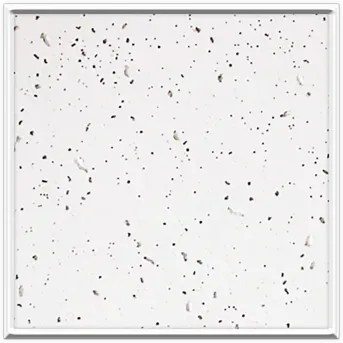Nov . 30, 2024 10:27 Back to list
Adjusting Drop Ceiling Main Tee for Optimal Installation and Aesthetic Appeal
Understanding Drop Ceiling Main Tee An Essential Component of Modern Interiors
In the world of interior design and construction, few elements are as significant yet understated as the drop ceiling, specifically its structural component known as the main tee. This article delves into the importance of drop ceilings, the role of the main tee, and how they can transform spaces while facilitating functionality.
What is a Drop Ceiling?
A drop ceiling, commonly referred to as a suspended ceiling, is a secondary ceiling that hangs below the original ceiling structure. It consists of a grid system that supports tiles or panels, allowing for a sleek finish and effective management of the space above. This can include plumbing, electrical wiring, and HVAC, making drop ceilings not only an aesthetic choice but also a practical one.
The Role of the Main Tee
At the heart of any drop ceiling system is the main tee—a pivotal component of the grid framework. Main tees are the horizontal metal channels that provide the primary support for the ceiling tiles. They are usually positioned at regular intervals, forming the basic structure upon which the entire suspended ceiling hangs.
The main tee comes in various lengths and is typically constructed from lightweight galvanized steel. These tees are designed to create a sturdy framework, enabling ceilings to hold their weight without sagging or failing. In a typical ceiling grid, main tees run parallel to one another, perpendicular to the support walls, and connect to cross tees that complete the grid formation.
Benefits of Using Main Tees in Drop Ceilings
1. Flexibility in Design The main tee system allows for versatile design possibilities. It can accommodate a variety of ceiling panels, from acoustic tiles that minimize sound to decorative panels that enhance aesthetics. This flexibility makes it easier to achieve a desired visual effect and improve acoustic performance in any space, from offices to homes.
drop ceiling main tee

2. Easy Access to Utilities One of the primary advantages of having a drop ceiling with a main tee system is the accessibility it provides. Maintenance or alterations to plumbing, electrical systems, or HVAC equipment can be performed quickly and efficiently without major renovations. This ease of access can save time and significantly reduce costs.
3. Improved Acoustics Many drop ceiling tiles are designed to absorb sound, making them an excellent choice for environments where noise reduction is critical. The main tee framework supports these acoustic tiles effectively, ensuring optimal sound performance.
4. Concealment of Imperfections Suspended ceilings are ideal for masking unsightly structural features such as uneven ceilings, exposed ductwork, or wiring. The main tee system allows for an even and clean finish, elevating the overall design of a space.
5. Energy Efficiency Drop ceilings can play a role in improving a building's energy efficiency. By providing an additional layer of insulation, they can help regulate temperatures and reduce energy consumption for heating or cooling.
Installation of Main Tee Systems
Installing a drop ceiling with main tees is a job that generally requires careful planning and execution. The process typically involves measuring the room dimensions, marking appropriate heights, and securely attaching the main tees and cross tees to create the grid. Once completed, ceiling tiles can be easily placed within the grid, providing a flawless finish.
Conclusion
In summary, the main tee is a crucial element of the drop ceiling system, supporting not only the aesthetics of modern interiors but also considerable functionality. This innovative construction feature offers design flexibility, improved acoustics, significant access to utilities, and energy efficiency while neatly concealing unsightly structural elements. As interior designs continue to evolve, the drop ceiling—with its reliable main tee framework—remains an invaluable option for architects, designers, and homeowners alike. Exploring the possibilities of drop ceilings can lead to a greater appreciation for the intricate balance of form and function in contemporary spaces.
-
Quality Ceiling Trap Doors & Access Panels | Easy & Secure AccessNewsAug.30,2025
-
Durable Ceiling T Grid Systems | Easy InstallationNewsAug.29,2025
-
PVC Gypsum Ceiling: Durable, Laminated Tiles for Modern SpacesNewsAug.28,2025
-
Pvc Gypsum Ceiling Is DurableNewsAug.21,2025
-
Mineral Fiber Board Is DurableNewsAug.21,2025
-
Ceiling Tile Clip Reusable DesignNewsAug.21,2025







